Emily Duan was known in her family as a “magnet for destruction.”
“I would break things all the time, anything from a microwave to, I don’t know, like laptops, phones, anything somewhat technology-related,” she said. “And I’ve always felt a little helpless by not being able to solve the problem or fix whatever I break myself.”
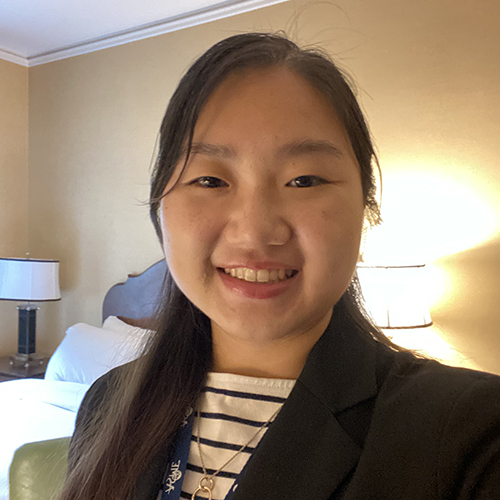
When considering college programs and potential career paths, she saw an engineering degree as a way to learn those skills.
“That was my intention going into this degree, wanting to be able to fix my own problems and not rely on other people,” she said. “And I saw that in mechanical engineering, you learn a little bit of everything.”
Duan officially earned her Ph.D. in mechanical engineering from NC State University this week after defending her dissertation in September. She came to NC State by way of the University of Maryland, Baltimore County (UMBC), where she earned her B.S. in mechanical engineering in 2019.
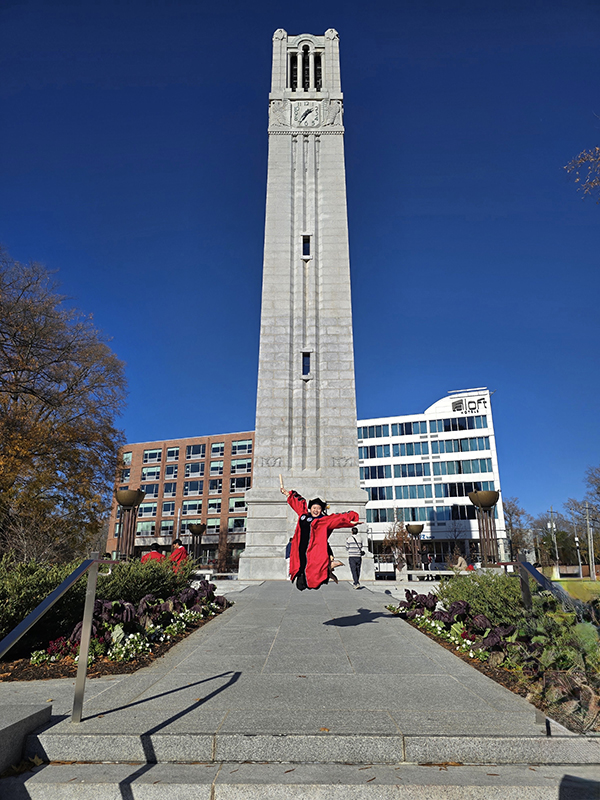
Along her academic journey, she became adept at not just fixing things herself, but also building entirely new technologies. And she learned she didn’t have to do it all alone.
Duan gave the student commencement speech for the Department of Mechanical and Aerospace Engineering this fall. Among other topics — including perseverance and not being afraid to take risks — she talked about the importance of cultivating community.
At UMBC, she received a scholarship through the Center for Women in Technology (CWIT) program, where for the first time, she was surrounded by lots of young women pursuing STEM degrees.
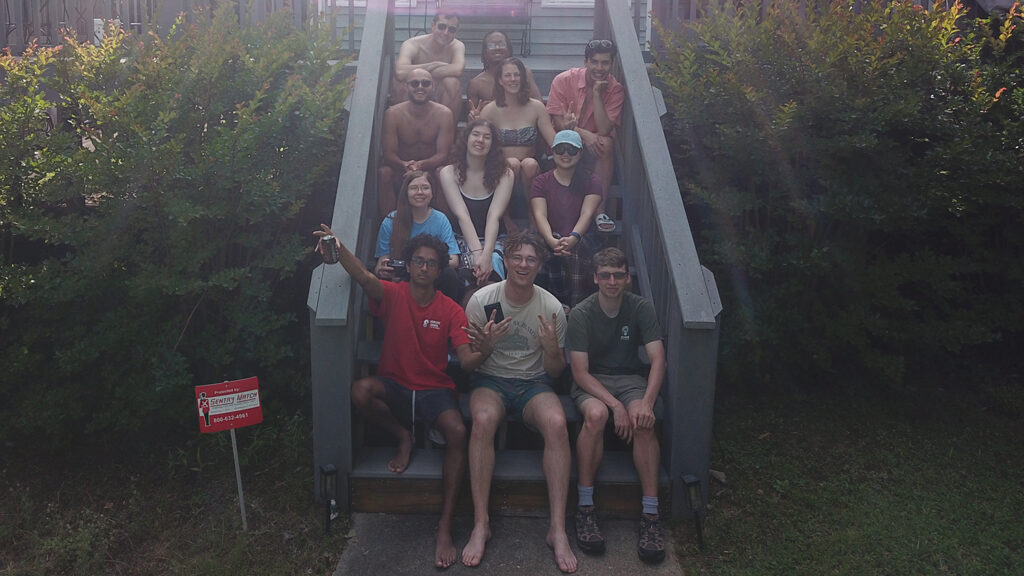
“Having this community in a college setting was really nurturing,” she said. “Because I was surrounded by a bunch of other girls who had similar aspirations, taking the same classes as me, and we all lived on the same floor during our freshman year in the dorm.”
Through CWIT and UMBC’s Meyerhoff Scholars Program, she was also introduced to research, which is what led her to pursue a Ph.D.
With her experience in research labs at Oakland University and Carnegie Mellon University, she knew she wanted to join a lab with a collaborative environment led by an advisor who had students’ best interests in mind.
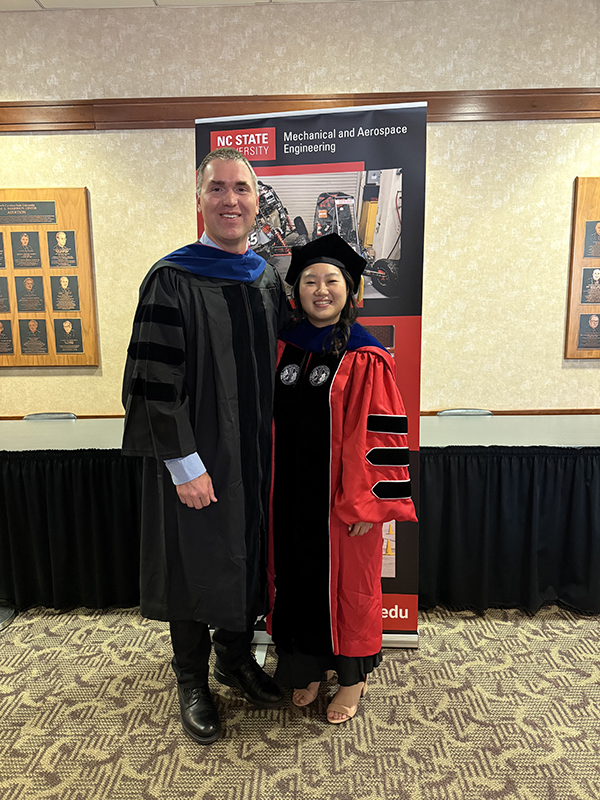
She found that at NC State in MAE Associate Professor Matthew Bryant’s Intelligent Structures and Systems Research Lab.
“When I chatted with Dr. Bryant, I saw his approach to teaching, the way he interacted with his grad students, how he ran his lab and his expectations for his students, and also how involved he was with research projects going on in his lab,” she said. “All of those things aligned with what I was looking for or felt like what I needed to be successful in grad school.”
She worked on research related to Bryant’s NSF CAREER Award, “Muscle-Inspired Load-Adaptive Actuation for Compliant Robotics.”

“My research focused on soft hydraulic actuation design that’s inspired by physiological architecture of human muscle tissues and how it makes assistive robotics safer, more comfortable and more compatible with the human body,” Duan said.
In muscles, there are thousands of fascicles, bundles of skeletal muscle fibers surrounded by connective tissue, that drive force and motion. The human body activates the amount needed relative to the task at hand. When lifting a 20-pound dumbbell, more fascicles are activated in your bicep than when picking up a cup from the table, Duan explained.
Using that concept, Duan and other researchers tried to incorporate this selective recruitment into robotics to increase battery life and range to make robots more energy efficient.
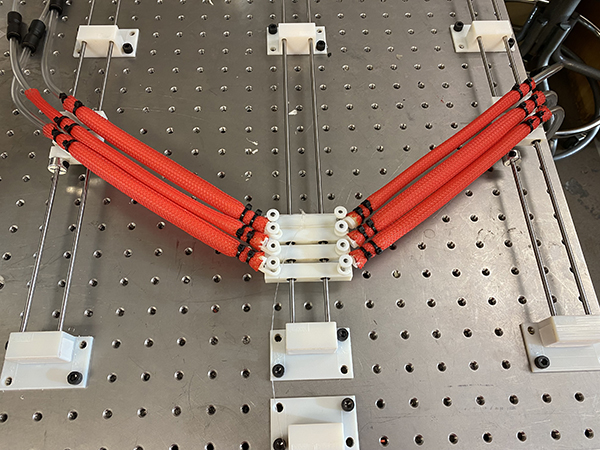
Her specific focus area was to develop a multi-objective design optimization framework for the soft hydraulic actuation bundles. Fascicles are arranged in different ways, known as muscle architecture. Duan looked at how to evaluate which architecture worked best in the soft hydraulic actuators based on the force and motion of the desired robotic task.
The framework will help researchers answer questions about which muscle architecture is best depending on the type of actuator being used, needs for range of motion and the size of the robotic limb. During her Ph.D., she received a grant from North Carolina Space Grant to explore how this work could lead to wearable devices that help with muscle atrophy for astronauts in space.
Finding those real-world applications was important to her, as was taking time to bring her research out of the lab and inspire a diverse group of students to pursue engineering. She led activities on muscle-inspired actuators to middle- and high-school students through a summer camp. She also mentored students at the North Carolina School of Science and Mathematics.
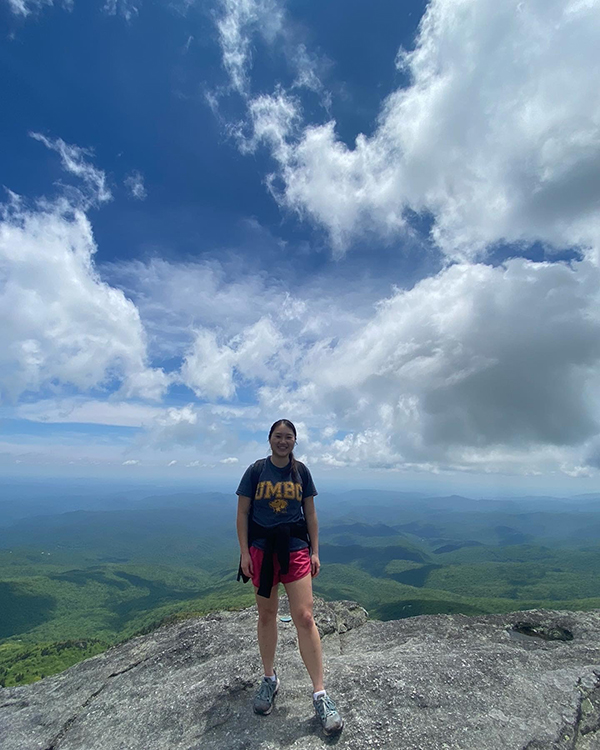
“I think we live in a new era now where innovation transcends boundaries of gender, race, ethnicity and discipline,” she said. “[My experiences] taught me the importance of equity in STEM fields as our society is advancing technologically, why we want to embrace diversity, especially as women engineers, and to recognize that when we lift each other up, we all rise.”
This post was originally published in College of Engineering News.
- Categories:



